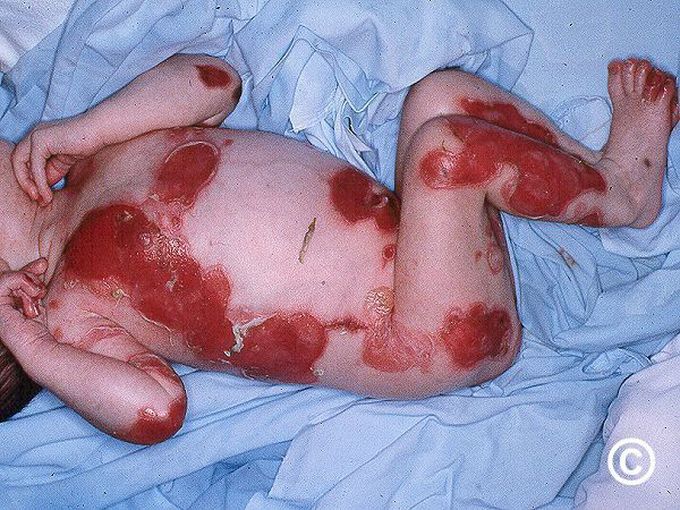


Causes of Epidermolysis Bullosa
Mutations (changes) to genes that you inherit from your parents cause most forms of epidermolysis bullosa. Genes carry information that determines which features are passed to you from your parents. We have two copies of most of our genes—one from each parent. People with the disease have one or more genes that carry the incorrect instructions to make certain proteins in the skin. There are two types of inheritance patterns: Dominant, which means you inherit one normal copy and one copy of the gene that causes epidermolysis bullosa. The abnormal copy of the gene is stronger or “dominant” over the normal copy of the gene, causing the disease. A person with a dominant mutation has a 50% chance (1 in 2) of passing on the disorder to each of his or her children. Recessive, which means that your parents do not have the disease, but both parents have an abnormal gene that causes epidermolysis bullosa. When both parents carry the recessive genes, there is a 25% chance (1 out of 4) per pregnancy of having a child with the disease. There is a 50% chance (2 out of 4) per pregnancy of having a child who inherits one abnormal recessive gene, making them a carrier. Researchers know that epidermolysis bullosa acquisita is an autoimmune disease, but they do not know what causes the body to attack the collagen in a person’s skin. Sometimes, people with autoimmune inflammatory bowel disease also develop epidermolysis bullosa acquisita. Rarely, medications cause the disease.

